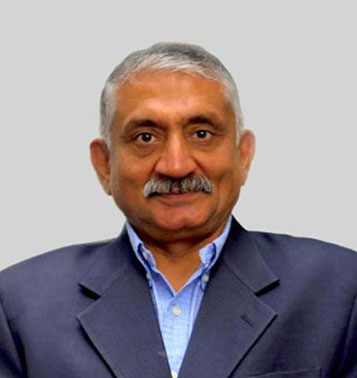PAFI VIEWS
Time to invest in India – Fastest Growing Economy
Author - Ajay Khanna

India’s growth path in recent times has been the talk at several global forums by various pundits. India, pegging the last quarter growth around 8 .4 %, reflects promise of a bright future. The country has become the fastest growing economy in the world and is set to increase current annual GDP of close to $ 3.5 trillion to $ 10 trillion by 2030 & to $ 30 trillion by 2047. The picture of emerging India is not just enviable but immensely transformational. From fragile five to first five, the country has come a long way in last decade to become an emerging economic powerhouse.
India’s improved external trade, rising supply chain integration, reliable household consumption, bright capital formation due to an upturn in private capex cycle, healthy balance sheets of banks and corporates and the government’s continued thrust on capital expenditure are enabling positivity never like before. India’s Current Account Deficit has narrowed to 1.9% of GDP in fiscal 2023 and current inflation stands at 5%. India received USD 71 billion FDI in 2022-23 & was among the top three FDI recipients.
Let me highlight three Ds – Data, Digitalisation & Demography as the primary enablers towards continuing on the growth path.
First, Data: A big haul has been the JAM Trinity which stands for Jan Dhan (Bank Accounts) – Aadhar – Mobile. The enormous task to establish Jan Dhan bank accounts, Mobile phone connections and Aadhar cards close to 1.3 billion Indians to include citizen’s data identity. It solved the problem of access and thereby generated public good at unprecedented scale and plugged the leakages of government subsidies giving more money at the hands of people especially the poor & underprivileged.
Second, Digitalisation: India’s digital economy grew 2.4 times faster between 2014 and 2019, generating about 62.4 million jobs. The implementation of the Unified Payments Interface (UPI) in India revolutionised the country’s approach to digital payments. Today, India accounts for the highest volume of real-time digital payments among businesses globally, with a share of over 40% of all such transactions. India’s digital payment transaction values more than the combined digital payments of the US, UK, Germany and France. India’s remarkable transformation from a predominantly cash-based economy to a digital payments leader in less than a decade is a case study in frugal innovation. No other country has anything like this in terms of a digital foundation for its economy
Third, Demography: India, with the largest population in the world, is home to 1.48 billion people. A recent survey showed country’s middle class will balloon from the present level of 432 million to 715 million by 2030-31—an increase of 65.5%. India’s consumer technology market is expected to reach USD 300 billion by 2027. Online retail industry is likely return to its annual growth of between 23% and 25%. Demographic dividend in the largest democracy has been behind the accelerated growth of India. With large, broadest and deepest labour pool, with a relatively inelastic labour market, provides a long runway for improving productivity at a pace faster than growth in wages enhancing global competitiveness.
India’s Innovation and start up ecosystem is another development to take note of. Start-ups have grown remarkably over the last six years, with India emerging as the third largest ecosystem for start-ups globally after the US and China. It houses over 84,000 recognized start-ups.
There are around 1,500 Global Capability Centres (GCCs) in India representing 45% globally. This is an acknowledgement that these centres are scalable with access to skilled manpower in new technologies, while adhering to business processes of the highest quality and efficiency. Indian and global players leverage India for high value services such as consulting, experience design, full stack digital engineering, and product development for Industry 4.0, and new business processes often considered core to businesses today.
Moreover, in India’s federal structure, states are fiercely competing with each other to attract investments. This New India story is infectious and we are witnessing the manifestations. Various Indian States such as Gujarat, UP, Maharashtra, Tamil Nadu and Karnataka have resolved to their state economies to higher GDP & some have targeted to reach $ 1 trillion!
Indian economy is opportune & open to business. With India-Germany trade history, that spans more than 500 years, both countries share a robust partnership that has its basis in strong business and economic links. Germany is India’s largest trading partner in Europe and is the 7th largest FDI source for India. There are more than 1,700 German companies in India providing around four hundred thousand direct and indirect jobs. It is time to increase economic engagement and investments from Germany to India. India’s economic & business environment, an unmatched ability to deliver development on a gigantic scale, make it a unique investment destination.
By
Ajay Khanna
Co-Founder, Public Affairs Forum of India. He is strategic advisor to corporates, think tanks, Industry associations & also teaches at Indian School of Public Policy



